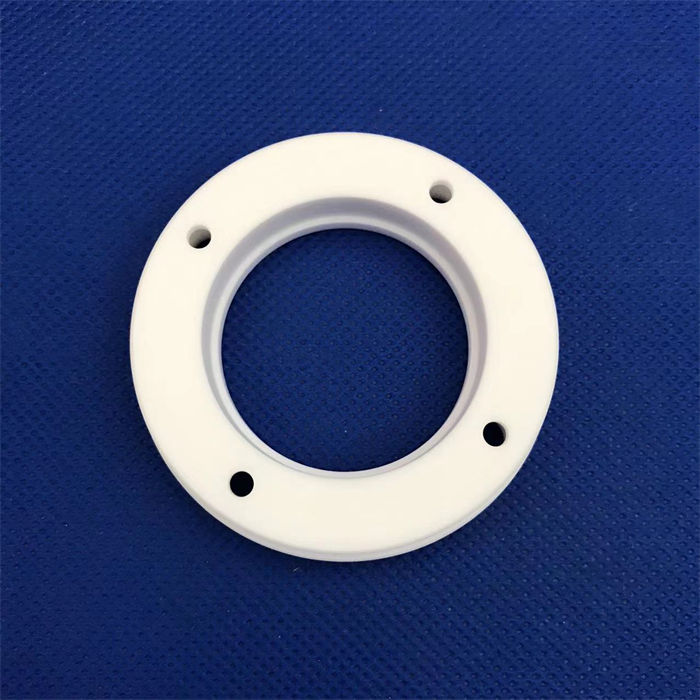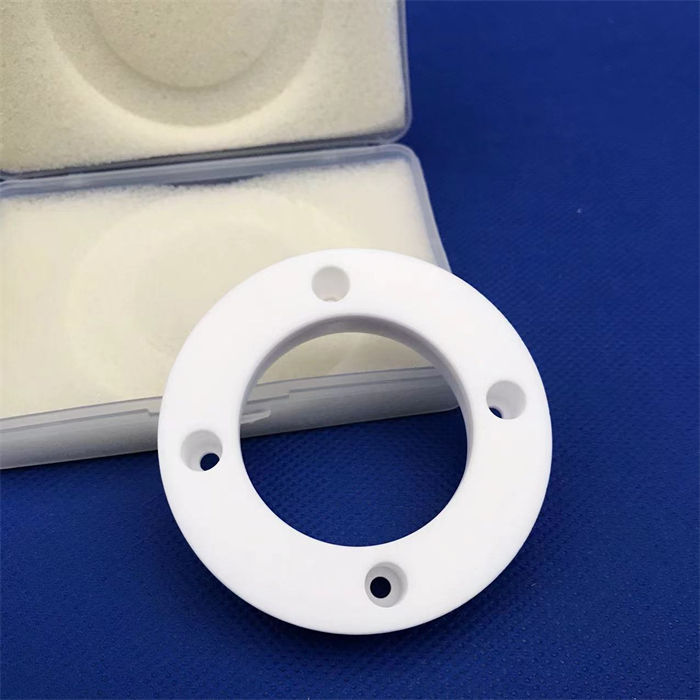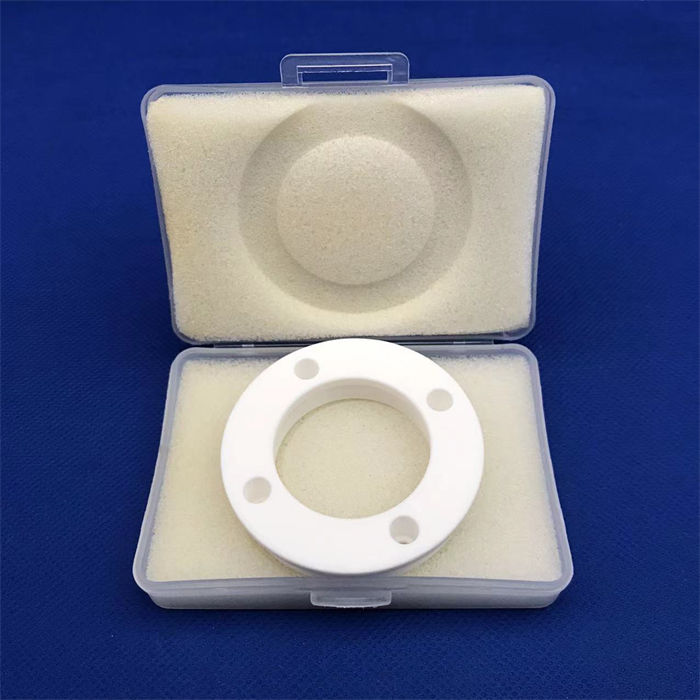What are the difficulties in processing alumina ceramic flanges
Aluminum oxide ceramic flange is a high-performance industrial component mainly made of high-purity aluminum oxide (Al ₂ O3), which has the characteristics of high temperature resistance, corrosion resistance, high hardness, and excellent insulation performance. It is widely used in industries such as semiconductor, chemical, power, and medical. However, due to its material properties, there are many difficulties in the processing, which affect production efficiency and finished product quality.

The main difficulties in processing alumina ceramic flanges
- The material has high hardness and is difficult to process
The hardness of alumina ceramics is second only to diamond, with a Mohs hardness of 9, far exceeding that of metallic materials. This makes traditional cutting tools (such as ordinary cutting tools and drill bits) extremely prone to wear, low machining efficiency, and easy to cause workpiece edge breakage or cracks.
Solution:
-High hardness cutting tools such as diamond or cubic boron nitride (CBN) are used for precision machining.
-Use non-contact machining techniques such as laser cutting or ultrasonic processing to reduce tool wear. - High brittleness, prone to cracking and edge collapse
Aluminum oxide ceramics belong to brittle materials, which are prone to microcracks or edge damage due to stress concentration during mechanical processing, affecting the sealing and structural strength of flanges.
Solution:
-Optimize machining parameters (such as feed rate and cutting depth) to reduce cutting forces.
-Adopting slow wire cutting or grinding technology to reduce impact stress.
-After processing, polishing or surface strengthening treatment is carried out to improve edge strength. - High processing accuracy requirements and difficult size control
Flanges typically require high-precision dimensional and positional tolerances (such as flatness, roundness, coaxiality), while ceramic materials may undergo shrinkage deformation during sintering, leading to increased difficulty in subsequent processing.
Solution:
-Using precision CNC grinding machines or laser measurement technology to ensure machining accuracy.
-Reserve machining allowance before sintering and achieve the final size through precision grinding. - Low thermal conductivity, prone to thermal stress during processing
The thermal conductivity of alumina ceramics is low, and local high temperatures during processing may lead to thermal stress concentration, increasing the risk of cracking.
Solution:
-Use coolant or cold air to cool down and avoid local overheating.
-Use low heat processing methods (such as waterjet cutting). - High surface smoothness requirements and difficulty in polishing
Some applications, such as semiconductor devices, require flange surfaces to achieve mirror level smoothness (Ra ≤ 0.1 μ m), but ceramic materials have low polishing efficiency and are prone to scratches.
Solution:
-Adopting chemical mechanical polishing (CMP) or plasma polishing techniques.
-Use nanoscale diamond grinding solution for fine polishing.

Application and advantages of alumina ceramic flange
- Solve the sealing problem in high-temperature environments
-Traditional metal flanges are prone to deformation and oxidation at high temperatures, while alumina ceramics can withstand temperatures above 1000 ℃ for a long time and are suitable for scenarios such as furnaces and heat treatment equipment. - Corrosion resistance and extended service life
-Metal flanges are prone to corrosion in strong acid, strong alkali, or high salt environments, while ceramic flanges have excellent chemical stability and are suitable for chemical pipelines, electroplating equipment, etc. - Excellent insulation performance, ensuring safety
-In high-voltage electrical equipment, ceramic flanges can effectively isolate current and avoid the risk of leakage. - Lightweight design to reduce equipment load
-Compared to metal flanges, ceramic flanges have lower density and can reduce equipment weight, making them suitable for fields such as aerospace and precision instruments.

The difficulties in processing alumina ceramic flanges mainly focus on high material hardness, high brittleness, difficult precision control, thermal stress management, and surface treatment. By selecting appropriate processing techniques (such as laser cutting, precision grinding, CMP polishing) and optimizing parameters, the yield can be effectively improved. Despite the difficulty of processing, alumina ceramic flanges perform excellently in harsh environments such as high temperature, corrosion, and insulation, providing a reliable solution for industrial equipment.
Brudeze Ceramics supplies and sells a wide range of high-quality quartz glass, including alumina ceramics, zirconia ceramics, silicon nitride ceramics, aluminum nitride ceramics, silicon carbide ceramics, boron carbide ceramics, bioceramics, machinable ceramics, etc. We can meet the customization requirements of various ceramic products.
Tags: boron carbide ceramics
CATEGORIES
LATEST NEWS
- What is Macor processable g...
- The material properties and...
- The reason for the high pri...
- What are the preparation me...
- Why modify aluminum nitride...
- Thermal conductivity values...
- What is the thermal expansi...
- Thermal shock resistance of...
- The average coefficient of ...
- What is high alumina ceramic
